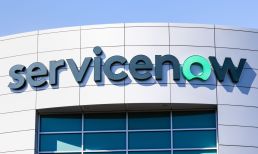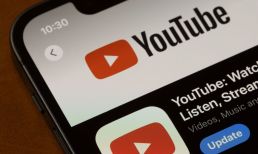Ironically resistant to change for an industry based on high-level innovation, healthcare is being forced into more efficient models out of changing patient, physician and payer needs.
Making this monolithic industry behave like a shopping or mobile banking app is the dream of healthcare consumerization, and after many failed attempts, it took a global pandemic to move things in a better direction for all stakeholders.
Analyzing trends through the lens of recent research, Experian Health President Tom Cox told PYMNTS’ Karen Webster that consumers want and need medicine to make the digital shift.
He said older demographics, often managing multiple health conditions, have taken to smartphone apps and telehealth due to their frequency of usage. For millennials and younger demos, it’s about ease, “but they’re both driving you to digital solutions which clearly are where the future is headed in healthcare from a convenience and access perspective,” he said.
Despite uptake by older cohorts, healthcare systems need to recognize the buying power of digital-first consumers — especially millennials and Gen Z — who are coming into their own as America’s largest and most influential block of spenders.
Prizing digital experience and speed above all, younger demos prefer to fill out forms before ever arriving at the doctor, and woe betide the practice not offering such options in 2022.
Advertisement: Scroll to Continue
“As a patient, I would much prefer to fill out the paperwork ahead of time so that I minimize, in theory, the amount of time that I’m waiting in the waiting room to go in, especially in light of today with the pandemic and other sicknesses,” Cox said.
It’s not just a matter of convenience. Filling out forms from home allows patients to have their insurance card, to accurately check prescription dosages and give better information.
“I prefer it because I think it’s more convenient, it’s more accurate, and I’m shifting work away from the provider’s office to me. I’m saving money and giving the patient a preference that they want. It’s that win-win that I think is going to drive adoption of these types of tools,” he said.
Recognizing that medical practices must now offer robust online tools and platforms for digital-first patients is key to the transformation of healthcare, with all stakeholders and benefitting.
See also: CFPB Reports Flood of Medical Debt-Collection Complaints Last Year
Personas and Payments
For the study “Accessing Healthcare: Easing Digital Frictions In The Patient Journey,” a PYMNTS and Experian Health collaboration, over 2,330 consumers were surveyed. From that emerged four patient personas describing shifting expectations as healthcare gets consumerized.
The Digital-First prefer using digital methods for at least five healthcare activities; the Mostly Digital use digital methods for three to four healthcare activities; the Partially Digital use these tools to manage one or two activities; and the Nondigital have no predilection for it.
Catering to these four personas and minding the overlap is crucial for healthcare organizations to master on the double-time because patients dropping analog doctors for digital in droves.
Estimates is another threshold for the consumer-as-patient now, with Accessing Healthcare finding that 15% of patients had issues getting accurate cost estimates for appointments and procedures, while 78% of patients say they’re satisfied with family doctors if they do not get an estimate, compared to 88% if they do — a meaningful 10 percentage-point spread.
Cox said “Before we ask anyone to commit to a purchase, we should give them [an idea of] how much it’s going to cost. But in healthcare, oftentimes we make the purchase decision without any knowledge of how much it’s going to cost.”
Not that it’s easy for physicians to know what the final price is going to be. “It is complicated to understand where people are in their deductibles,” Cox said.
“It’s complicated to understand what the contractual rates are with the insurance company, so that the provider can basically adjudicate that claim prior to services being rendered. The level of complexity has made it hard to get accurate information in a timely manner for patients.”
But with passage of the No Surprises Act, practices have new legal obligations on pricing transparency and will need the data-rich systems that can generate accurate estimates.
“Today we actually do that, and we can do it pre-service,” he said. “It’s about making it as easy as possible to get that information in the hands of the patient prior to service. It can be done.”
He said “That’s the beauty of leveraging APIs to get that information, which is what we do. We understand where somebody is in the deductible. Even more complicated than that is understanding what the rates are that the insurance company negotiated with the provider.”
Also, Cox believes that only about 5% of estimate are very off the mark, meaning that “as an industry [we should focus on] solving for the 95% and not the 5%, because 95% of people are going to get an accurate estimate. We need to not be so focused on the 5% of exceptions.”
Get the study: Accessing Healthcare: Easing Digital Frictions In The Patient Journey
“Necessary, Not Nice to Have”
The payments piece is where the surgical latex rubber meets the road in this debate, and among the most difficult to remake into the seamless digital flows consumers now expect.
Billing mayhem helped bring the No Surprises Act about, and healthcare providers need the technology to better handle billings on their end, as No Surprises carries penalties.
Cox said, “On the payment side, I will just tell you for myself as a patient, I much prefer to pay before I get there. It’s all about removing friction. Or I’d like to pay when I leave so that I don’t have to get the bill. If I do get the bill, I want to be able to pay online. What I don’t want is fill out the slip with a check — the worst — or my credit card information, and mail it to someone.”
Taken together, these factors add up to physician loyalty — or lack thereof — if things go amiss. For example, the Accessing Healthcare study found that 62% of digital-first patients went to a new doctor for their most recent visit. Unlike their parents, they’ll drop a doctor if displeased.
Increasingly, it’s the digital transformation of everything from scheduling the first consult to receiving the final bill — the patient journey — and how it’s changing expectations.
“Probably even two years ago, a lot of the digital tools were nice-to-have and not need-to-have,” Cox said. “I’ve been in digital healthcare for about 10 years. For the first eight years we were fighting to create demand. Now the demand has been created by the pandemic and the acceleration of consumerism, and it has become necessary, not nice to have.”
See also: Healthcare Payments Get Patient-Centered Overhaul in 2022



